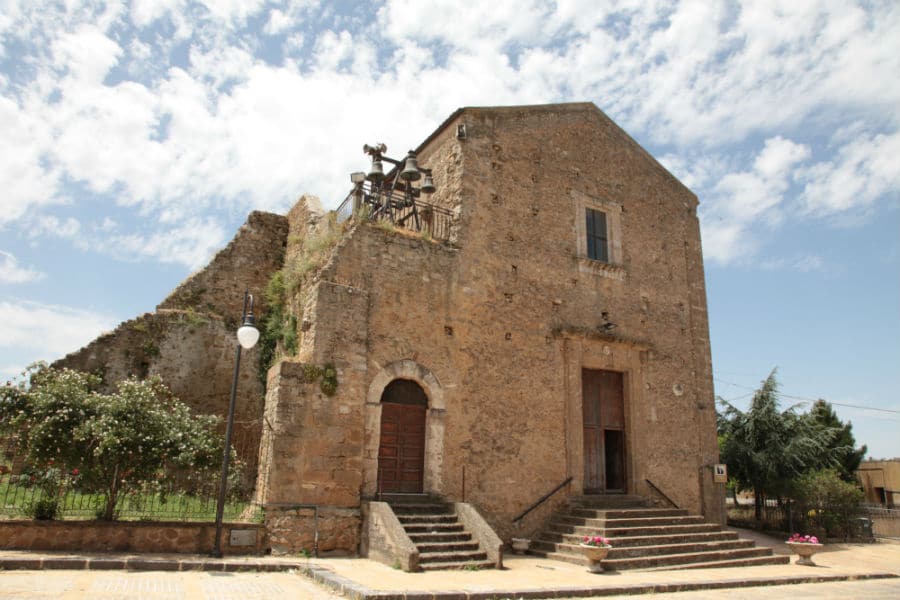According to tradition the church of Sant’Anna in Aidone, in Sicily, was originally a mosque. In its current form dates back however to the XVII century, although the walls on the west side are probably the rest of a more ancient building. In 1623 began the construction of the adjacent convent of Santa Maria of Jesus by the Fathers osservanti and at the same time the church was enlarged and enriched, also for merit of rich donations made by local nobles. In 1660 the church renewed was reopened for worship and meanwhile the Fathers osservanti in 1640 had given way to the Reformed Fathers which dedicated the church Santa Rosalia: in the popular tradition however remained the ancient denomination. The convent of the Reformed Fathers do not remain that the ruins of the cloister with the portico with arches shaped terracotta bricks and resting on slender columns in Doric style.
The church has a single nave, has the interior is simple and unadorned, but is enriched by the central altar baroque, decorated with marble inlays, in duotone, white and black, and from the lateral altar of Sant’Anna, copy of the first with a more economical pictorial decoration. Beside the main altar dedicated to the noble Joseph Savina died on 1655 with the coat of arms of his lineage allied with the Colonna family. Next there is the framework of S.Francesco da Paola dei F.lli Vaccaro of Caltagirone. According to the hypothesis of Umberto Digrazia the canvas of Sant’Anna – S.Gioacchino – Saint Joseph with the Madonna (portraying S. Rosalia) with the Child Jesus of 1632 , placed on the altar of Sant’Anna is a work of Pietro Novelli The Monrealese , with his self-portrait to the right. Inside the church preserves other canvases, a holy water stoup of the sixteenth-century gaginiana school, and, in the sacristy, an inlaid armoire, operates by Frà Innocenzo da Petralia. The church also hosts the crucifix in wood of Humble Friar Pintorno from Petralia, of 1635, masterpiece of this artist.



